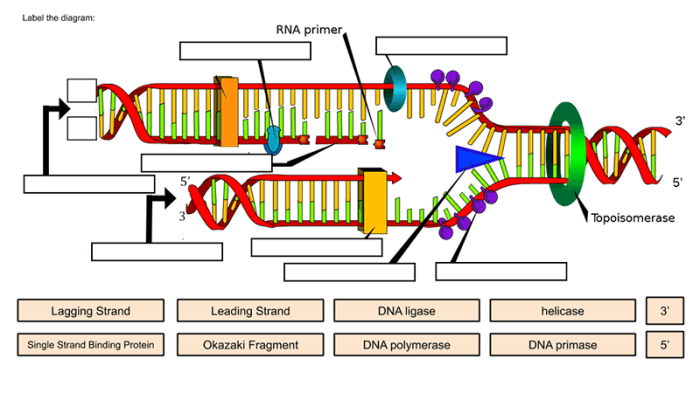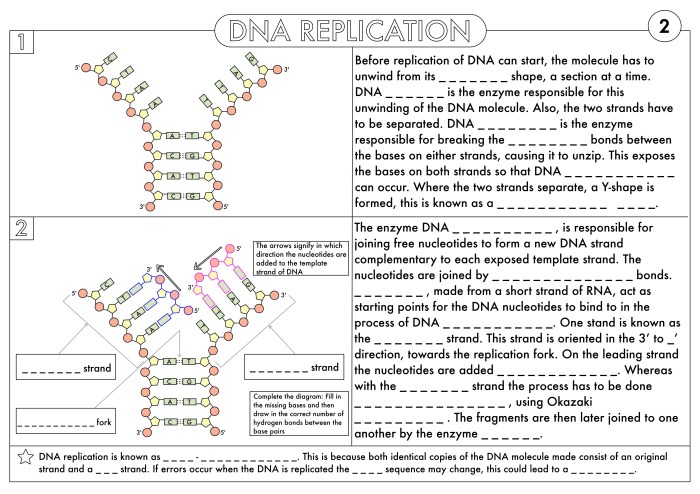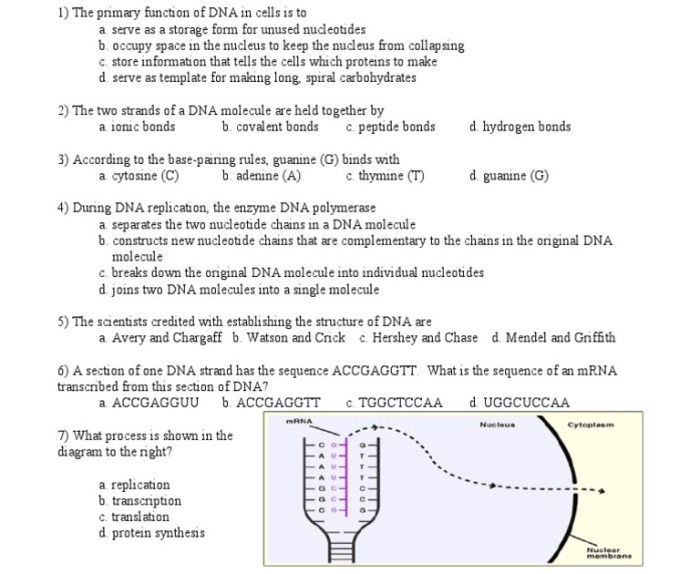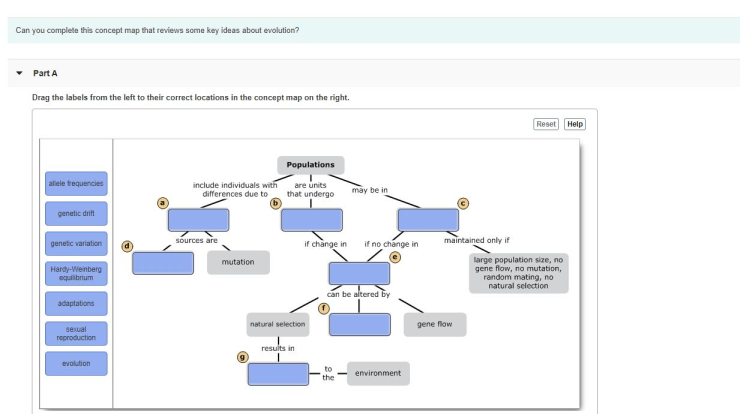Welcome to the realm of DNA replication, where the intricate dance of genetic replication unfolds. As we delve into the dna replication model activity answer key, we embark on a journey that unravels the fundamental mechanisms governing the propagation of life.
This comprehensive guide will illuminate the significance of DNA replication, its intricate steps, and the profound implications it holds for our understanding of biology and biotechnology.
Introduction: Dna Replication Model Activity Answer Key

DNA replication is the process by which a cell duplicates its DNA. This process is essential for cell division and growth, and it also plays a role in DNA repair. The basic steps of DNA replication are as follows:
- The DNA double helix unwinds and the two strands separate.
- Each strand of DNA serves as a template for the synthesis of a new strand.
- The new strands are joined together to form two new double helices.
DNA replication is a complex process that is carried out by a large number of enzymes and other proteins. These proteins work together to ensure that the DNA is replicated accurately and efficiently.
Model of DNA Replication
The model of DNA replication is a simplified representation of the process that was first proposed by James Watson and Francis Crick in 1953. This model is based on the following observations:
- DNA is a double helix.
- The two strands of DNA are complementary to each other.
- DNA replication is semi-conservative.
The semi-conservative model of DNA replication states that each new double helix is composed of one strand from the original DNA molecule and one newly synthesized strand. This model has been supported by a large number of experiments, and it is now widely accepted as the correct model of DNA replication.
Variations in DNA Replication
There are a number of different variations of DNA replication. These variations are found in different organisms and cell types. Some of the most common variations include:
- Rolling circle replicationis a type of DNA replication that is found in some bacteria and viruses. In rolling circle replication, the DNA molecule is circular and it is replicated by a single enzyme that moves around the circle, synthesizing a new strand of DNA as it goes.
- Theta replicationis a type of DNA replication that is found in some eukaryotes. In theta replication, the DNA molecule is linear and it is replicated by two enzymes that move in opposite directions from a central point.
The different variations of DNA replication are all designed to ensure that the DNA is replicated accurately and efficiently in different organisms and cell types.
Applications and Implications, Dna replication model activity answer key
DNA replication has a number of important applications in genetic engineering and biotechnology. These applications include:
- Gene cloningis a technique that is used to make multiple copies of a specific gene. Gene cloning is used to study genes and to produce proteins for medical and industrial purposes.
- Polymerase chain reaction (PCR)is a technique that is used to amplify a specific region of DNA. PCR is used to study genes and to diagnose diseases.
- DNA sequencingis a technique that is used to determine the order of the nucleotides in a DNA molecule. DNA sequencing is used to study genes and to diagnose diseases.
DNA replication also has a number of implications for genetic disorders and diseases. These implications include:
- DNA replication errorscan lead to mutations. Mutations can cause genetic disorders and diseases.
- DNA replication can be inhibited by certain chemicals and drugs.This can lead to cell death and cancer.
Understanding DNA replication is essential for understanding genetics and for developing new treatments for genetic disorders and diseases.
Query Resolution
What is the significance of DNA replication?
DNA replication is essential for cell division and growth, ensuring the faithful transmission of genetic information to daughter cells.
How does DNA replication occur?
DNA replication involves the unwinding of the double helix, separation of the strands, and synthesis of new complementary strands by DNA polymerase.
What are the applications of DNA replication in biotechnology?
DNA replication forms the basis of genetic engineering techniques, enabling the manipulation and modification of genes for various applications.



